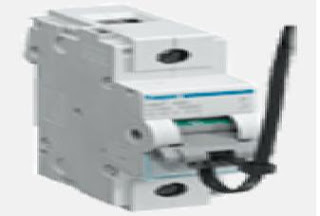

Dual-tone multi-frequency (DTMF) signaling is used for telephone signaling over the line in the voice-frequency band to the call switching center. The version of DTMF used for telephone tone dialing is known by the trademarked term Touch-Tone, and is standardised by ITU-T Recommendation Q.23. Other multi-frequency systems are used for signaling internal to the telephone network.
DTMF is the global standard for audible tones that represent the digits on a phone keypad.
With touch-tone land-line phones, pressing a key on the dialpad generates the corresponding DTMF tone for that key. The land-line phone system can then "listen" and decode that tone to determine which key was pressed, enabling dialing.
Mobile phone networks use digital signals instead of DTMF for direct dialing, but DTMF is still used over mobile phones to navigate automated systems such as phone menus, and for secondary dialing, such as using a calling card.
Each DTMF "tone" is actually two tones - a low-frequency tone and a high-frequency tone - combined. (Hence the name "dual tone multi-frequency".) Looking at the standard phone keypad as a grid, the low tone corresponds to the row, while the high tone corresponds to the column.
DSC software utilizes DTMF signaling in our award winning computer telephony software applications.
IVR software from DSC uses DTMF signaling as the primary user communication method. Calls are processed using our automatic call distribution system which determines the called number and transfers this call to an agent hunt group.
Call center agents or workstations are identifed to the phone system and placed in various user groups. As a call is received, the DNIS of this call is used to lookup the agent group associated with this DNIS. The next available agent in this group is determined and the call is routed to this workstation.
DTMF processing is just one of the many features of our computer telephony integration and IVR software. This rich set of phone software library routines enables application programs to control a phone system.
CTI software lets you increase your call processing center's productivity, enhance customer service and reduce costs by combining the capabilities of our call center phone system with the custom functionality of your Windows, Unix or Web applications.
Data collected by our ACD (Automatic Call Distribution) or IVR (Interactive Voice Response) systems can be passed to your existing PC, Unix or Web applications through our CTI software.
















































